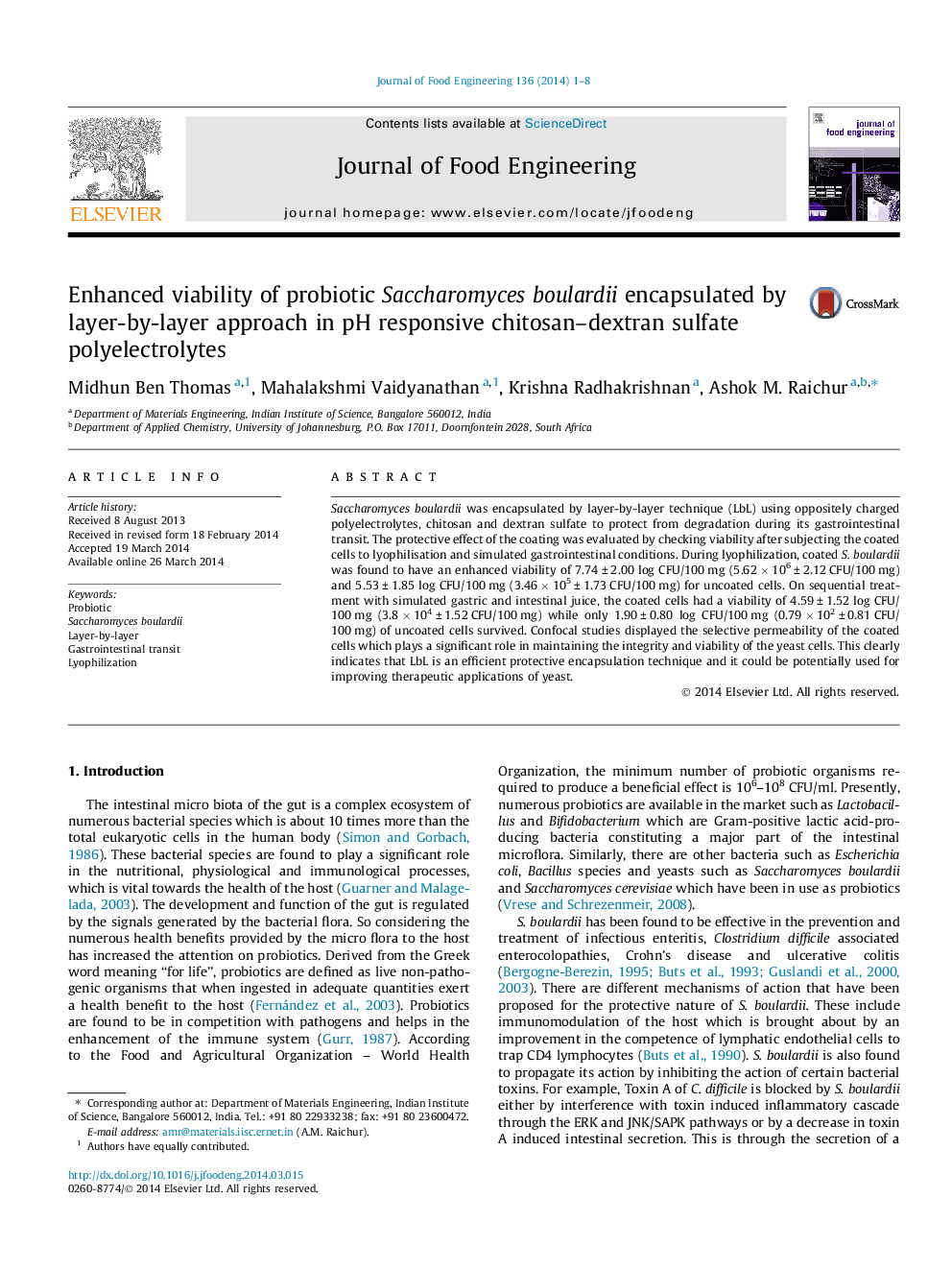| Article ID | Journal | Published Year | Pages | File Type |
|---|---|---|---|---|
| 223130 | Journal of Food Engineering | 2014 | 8 Pages |
•Encapsulated S. boulardii by layer-by-layer technique using chitosan and dextran sulfate.•Enhanced survivability for coated S. boulardii on lyophilization.•Enhanced viability for S. boulardii exposed to simulated gastric and intestinal juice.•Coated yeast more effective in prevention and treatment of gastrointestinal diseases.
Saccharomyces boulardii was encapsulated by layer-by-layer technique (LbL) using oppositely charged polyelectrolytes, chitosan and dextran sulfate to protect from degradation during its gastrointestinal transit. The protective effect of the coating was evaluated by checking viability after subjecting the coated cells to lyophilisation and simulated gastrointestinal conditions. During lyophilization, coated S. boulardii was found to have an enhanced viability of 7.74 ± 2.00 log CFU/100 mg (5.62 × 106 ± 2.12 CFU/100 mg) and 5.53 ± 1.85 log CFU/100 mg (3.46 × 105 ± 1.73 CFU/100 mg) for uncoated cells. On sequential treatment with simulated gastric and intestinal juice, the coated cells had a viability of 4.59 ± 1.52 log CFU/100 mg (3.8 × 104 ± 1.52 CFU/100 mg) while only 1.90 ± 0.80 log CFU/100 mg (0.79 × 102 ± 0.81 CFU/100 mg) of uncoated cells survived. Confocal studies displayed the selective permeability of the coated cells which plays a significant role in maintaining the integrity and viability of the yeast cells. This clearly indicates that LbL is an efficient protective encapsulation technique and it could be potentially used for improving therapeutic applications of yeast.
